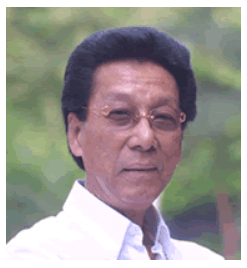The American Heart Association boosts CPR awareness, skills among Asian American communities to enhance cardiac arrest survival
LOS ANGELES, May 15, 2024 — Despite strides in cardiopulmonary resuscitation (CPR) training, consumer research from the American Heart Association reveals only 1 in 4 Asian American individuals are confident they could correctly perform Hands-Only CPR, compared with a comparable confidence rate of more 1/3 of the general population. The same survey showed nearly 70% of Asian American adults are hesitant to perform Hands-Only CPR because they are worried they will hurt the person who has suffered a cardiac arrest. Among the general population, 57% still express this fear. To build CPR skills, knowledge and confidence and to close these gaps, the American Heart Association is launching the “Today You Were Ready” nationwide awareness campaign aimed at empowering Asian American communities to learn Hands-Only CPR and be ready to save a life.
The campaign launch in Los Angeles coincides with Asian American Native Hawaiian Pacific Islander Heritage Month (AANHPI) and includes community outreach to emphasize the importance of being prepared to respond to a cardiac emergency. The effort is part of the overarching American Heart Association’s Nation of LifesaversTM movement, which is focused on turning bystanders into lifesavers and doubling survival rates from sudden cardiac arrest by 2030.
“Unless we share these critical public health messages, Asian American Pacific Islander communities and other historically excluded groups will remain more likely to die of sudden cardiac arrest than other groups,” said Linda Tsai, Region SVP/Senior Executive Director, American Heart Association Los Angeles. “The ’Today You Were Ready’ campaign will address those barriers and provide these communities with the tools and resources they need to learn and perform Hands-Only CPR.”
Cardiac arrest can happen to anyone at any time, and without quick bystander CPR, it is typically fatal. According to research in the Journal of the American Heart Association, about 72% of cardiac arrests that occur outside of a hospital happen at home. That means that if you are called on to perform CPR, it will likely be to save the life of someone you love.

Jenylyn Carpio’s cardiac arrest at age 22 awakened her to the importance of learning CPR.
After giving birth to her daughter, the young wife, mother and student felt stressed and fatigued. One day, Carpio’s mom offered to watch the baby while she took a nap. The next thing she remembers is her mom performing CPR on her and a police officer flashing a light into her eyes. Her mom told her she had suffered cardiac arrest.
“My mom saved my life with CPR,” said Carpio, who was later diagnosed with a genetic heart condition that affects her heart rhythm and increases her risk of cardiac arrest. “Everyone can learn to save a life and you can be a lifesaver, too,” she said.
Cardiopulmonary resuscitation is an emergency response that can help save a person’s life if their breathing or heart stops. At the forefront of resuscitation science, education, and training, the American Heart Association is the worldwide leader and publisher of the official scientific guidelines for CPR.

By showcasing the two easy steps to help save a life, the Association aims to change and break through the hesitancy barrier. Hands-Only CPR is CPR without breaths. It is for teens and adults only and is performed in two steps: 1) Call 911 and 2) push hard and fast in the center of the chest to a beat of 100- 120 beats per minute.
Studies show that women who have a cardiac arrest outside a hospital setting are less likely than men to receive lifesaving CPR.[1] This gap is even larger for Asian American and Pacific Islander women.[2] According to data from the American Heart Association, these women are less likely to receive bystander CPR compared to other populations, contributing to lower survival rates. Cultural factors, language barriers and limited access to CPR education may further exacerbate these disparities. The fear of accusations of inappropriate touching or injuring the person and lack of knowledge about their state’s Good Samaritan Laws contribute to some people’s hesitance to perform CPR.[3] [4] Improving CPR awareness and accessibility within the Asian American Pacific Islander community is crucial to increasing survival rates for women experiencing cardiac emergencies.
“By inspiring the Asian American Pacific Islander community to learn Hands-Only CPR, we can improve health outcomes for Asian American women and their loved ones, especially those suffering cardiac arrest,” said Tsai.
In the United States, the Asian American Pacific Islander communities and other people of underrepresented populations are at a higher risk of poor outcomes from out-of-hospital cardiac arrest than the general population, in part due to longstanding structural racism and social policies that have limited access to quality education and health care.[5][6]
Survey findings from the Association show that historically excluded populations are more likely to incorrectly believe that special training and certification are required to perform Hands-Only CPR on an adult or teen and more likely to be hesitant to perform the skill for fear of causing injury.[7] These misperceptions contribute to poor survival rates (less than 10%) from out-of-hospital cardiac arrest, which affects more than 350,000 Americans annually.[8]
To learn more about the campaign or to get involved, visit heart.org/nation.
Additional Resources:
- Understanding the Importance of the Lay Responder Experience in Out-of-Hospital Cardiac Arrest: A Scientific Statement From the American Heart Association Difference in Cardiac Arrest vs. Heart Attack
- Learn Hands-Only CPR/use an AED (Video) (English, Spanish, Mandarin)
- AHA health information: Bystander CPR
- AHA health information: Bystander CPR Infographic
- AHA health information: Hands-Only CPR Resources
- Follow AHA/ASA news on X (formerly known as Twitter) @HeartNews
[1] Women have lower chances than men to be resuscitated and survive out-of-hospital cardiac arrest – PMC (nih.gov)
[2] Cardiovascular Disease in Hispanics/Latinos in the United States – PMC (nih.gov)
[3] Abstract 241: Legal Risk of Bystander Cardiopulmonary Resuscitation | Circulation (ahajournals.org)
[4] Part 1: Executive Summary: 2020 American Heart Association Guidelines for Cardiopulmonary Resuscitation and Emergency Cardiovascular Care | Circulation (ahajournals.org)
[5] Bystander CPR less common in Hispanic neighborhoods | American Heart Association (Blewer, et al. Circulation. 2020;141:34–41)
[6] Social Determinants of Cardiovascular Risk Factors Among Asian American Subgroups | Journal of the American Heart Association (ahajournals.org)
[7] Heart Disease and Stroke Statistics—2022 Update: A Report From the American Heart Association | Circulation (ahajournals.org)
[8] American Heart Association Heart and Stroke Stat update 2023 (Tsao et al, Circulation. 2023;147: e93–e621) Please update to 2024 heart disease and Stroke Stats reference





